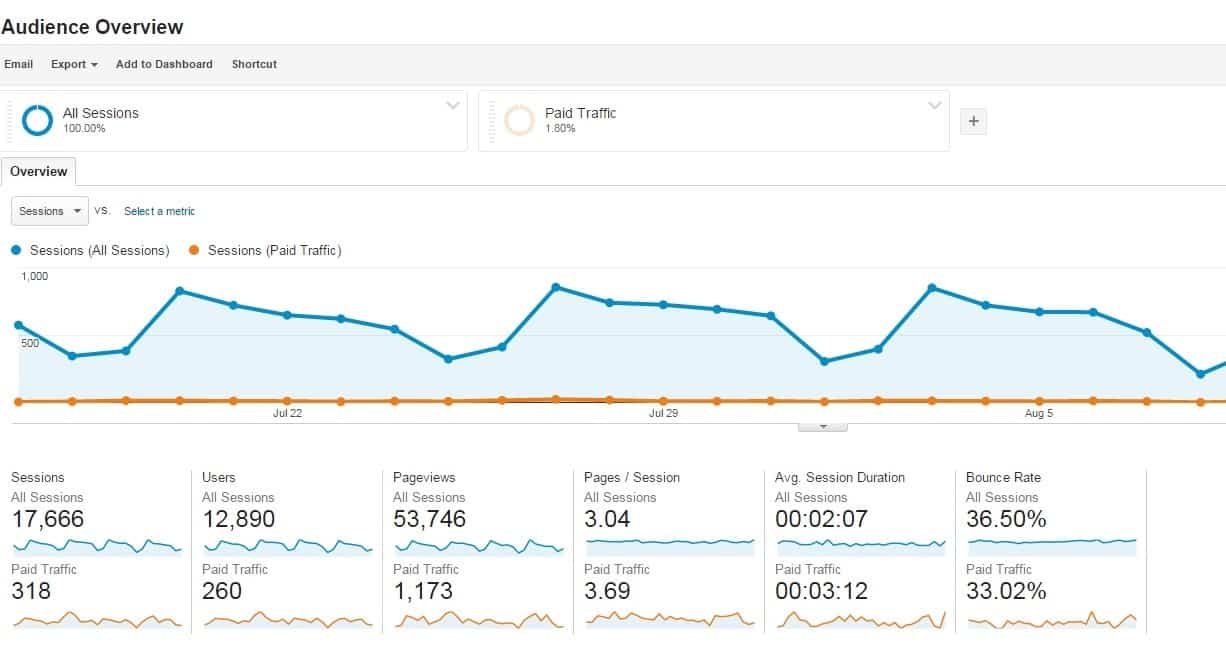I am asked that question and many other data centric questions weekly by clients. It is a good question – a fair question. There are campaigns running and we want to know how well these campaigns are performing. Visitor retention numbers such as bounce rate, average time on-site and page per visit are important “soft” metrics on how a campaign is performing. These are good to use in addition to the end goal metrics – which are typically either conversions in the form of lead forms, downloads, or actual sales.
Everyone loves their numbers, so the questions will always revolve around numbers. The challenge is knowing what a good number is and what a bad number is. At Netvantage, we have the luxury of being able to have a loose benchmark for how sites perform based on the makeup of the site, the target audience and the sector. However, you only know your own site and you do not have access to anyone’s Google Analytics data. Having a number in mind to be using as a goal is harder to determine. We all would like bounce to be “low,” average session duration to be “high” and have pages per sessions be “higher.” But what that number actually is can be harder to pin down. Is 35% a good bounce rate? This bounce rate is 90%, isn’t that bad? Is 2 minutes and 28 seconds on the site too short? Isn’t 4 page views per session healthy?
Context, Landing Pages and Site Size
When evaluating this data, context is important. If you are sending someone to a smaller site, or a singular landing page – you need to expect the visitor retention levels to be high and be okay with it. If you are sending visitors to a deeper site, then you would expect visitors to have lower bounce rate, higher pages per visit and higher time on-site. If you are sending people to a specific landing page within a services area, should they be moving throughout the navigation to other services? Or is your service such that they have a main point, get to your landing page, find what they are looking for, and take action? All of this factors into what good and bad visitor retention numbers look like.
Google Analytics Segments and Channel Data
One way to determine what good and bad visitor retention numbers are is to compare how a page is performing from paid search versus other channels of traffic. To do this, run a Paid Traffic segment in Google Analytics and then look at visitor retention.
To create this segment click on +Add Segment

From here, select Paid Traffic and Hit Apply. You now can see how your paid traffic is performing as compared to the rest of the site’s traffic.

In this instance we can see that paid traffic is beating the site average in terms of visitor retention. The bounce rate is lower than average, with the average pages per session and average session duration higher. Safe to say that from this data, in comparison to the site average, the PPC traffic is performing well and 33% bounce rate is “good.” Another way would be to set up a segment that didn’t broadly cover PPC traffic (which may be misleading due to several factors, intercept keywords, etc.) and see how a specific campaign is performing against the site averages.
An additional way to compare metrics is to look at the Source/Medium section of your Google Analytics. To do so go to Acquisition>All Traffic>Source Medium:

Initial judgement of the paid search traffic would be that it is performing “well” based on a lower bounce rate, higher page/session and a 2 minute and 31 second average sessions duration. However, when compared to the other two main channels for traffic we can see that it performs at a slightly lower level; still moderately good, but below site averages for other sources.
In summary, there is no single answer for what “good” looks like when it comes to paid search metrics. It is always important to view your Google Analytics data in context to your site size, goals and your overall traffic performance to determine what your metrics should look like for PPC to be successful.

Leave a Reply